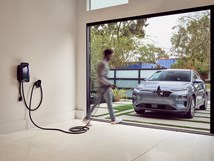5G for Autonomy
Although there seems to be tremendous concentration (or at least coverage) of autonomous vehicles as independent, stand-alone entities that will roll through the highways and byways depending only on their camera and LiDAR systems, truly effective autonomous vehicles are going to need to communicate with the outside world, and that 4G LTE system that you have running on your cell phone isn’t going to cut it.
#electronics
Although there seems to be tremendous concentration (or at least coverage) of autonomous vehicles as independent, stand-alone entities that will roll through the highways and byways depending only on their camera and LiDAR systems, truly effective autonomous vehicles are going to need to communicate with the outside world, and that 4G LTE system that you have running on your cell phone isn’t going to cut it.
There will need to be an alternative that’s capable of greater data speeds. Like 5G. This is a technology that’s coming, but it isn’t a matter of telecom companies turning up the dial from 4 to 5. It will take a buildout of more communications antennas in order to provide the higher-speed data rates, exceedingly low latency, and connectivity required—especially in a world where everyone will have 5G on their phones as well as in their cars. (Well, not everyone, but lots of people.)

NTT DOCOMO, the Japanese telecom company (which not only has an LTE network running in Japan, but a 3G network as well), recently ran a trial of 5G for automotive applications along with Toyota, Ericsson and Intel. They equipped a Toyota minivan—an Alphard—with a specially designed antenna and an Intel GO 5G Automotive Platform terminal, and ran it through a section of Tokyo where they setup multiple Ericsson base stations using the Cloud RAN architecture.
They were able to achieve data speeds up to 1 Gbps downlink/600 Mbps uplink and 4K-resolution video communication. The vehicle was traveling at 30 kmph—or about 19 mph.
Here’s hoping that the speed of the data isn’t correlated with the speed of the minivan.
RELATED CONTENT
-
Honda Re-Imagines and Re-Engineers the Ridgeline
When Honda announced the first-generation Ridgeline in 2005, it opened the press release describing the vehicle: “The Honda Ridgeline re-defines what a truck can be with its true half-ton bed payload capability, an interior similar to a full-size truck and the exterior length of a compact truck.” And all that said, people simply couldn’t get over the way there is a diagonal piece, a sail-shaped buttress, between the cab and the box.
-
Autoline After Hours: The 2020 Cadillac XT6
Cadillac currently has three non-car vehicles in its lineup, the imposing and possibly venerable Escalade, the XT5, which started its existence as the SRX and is now crushing it in the market, and the most recent, the compact XT4, which is in a sweet spot for those looking to get into the premium portion of the market.
-
Bolt EV: Like a Hammer Through a Screen
Some of you may remember the Apple “1984” commercial that ran on January 22, 1984, the ad that announced the Macintosh to the world.


.jpg;width=70;height=70;mode=crop)






